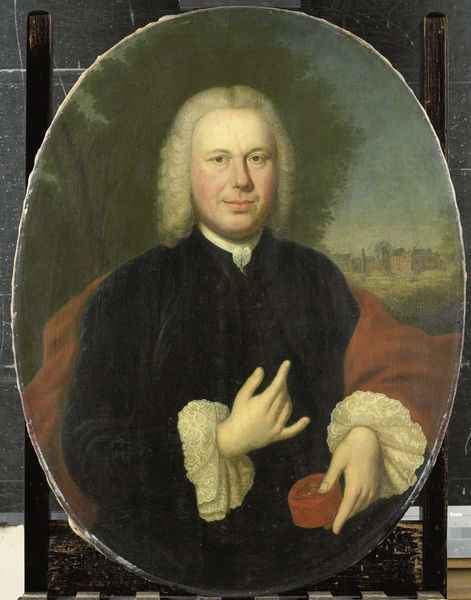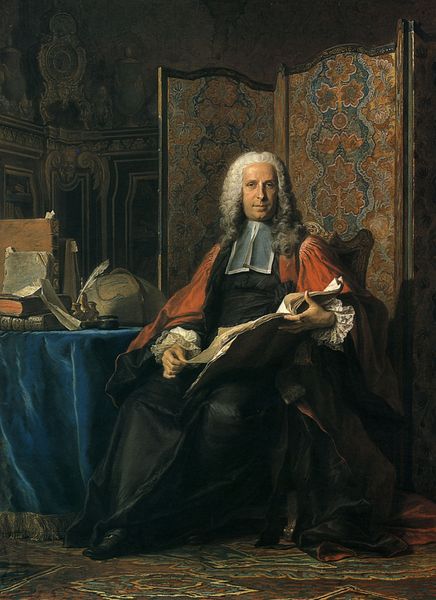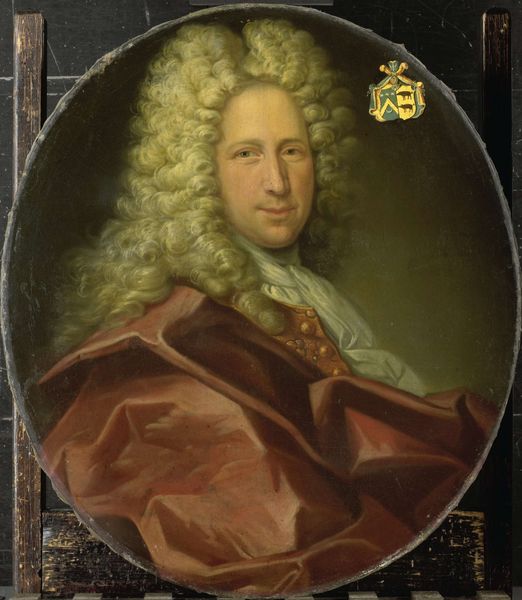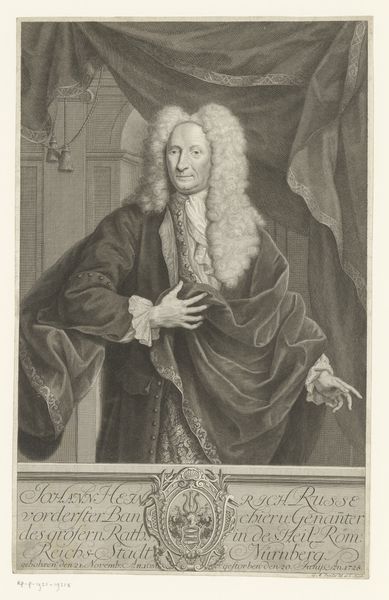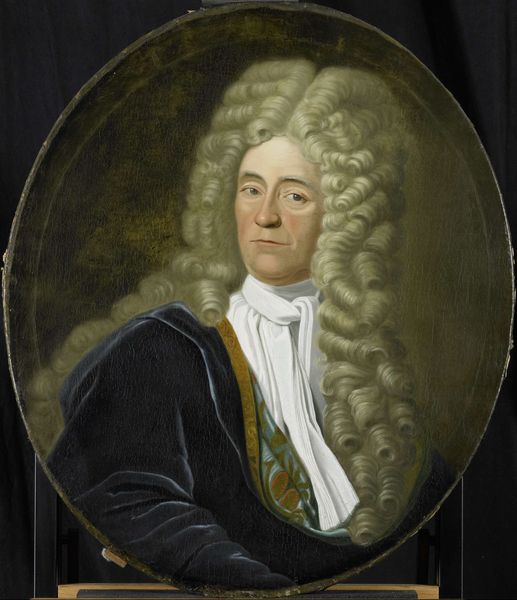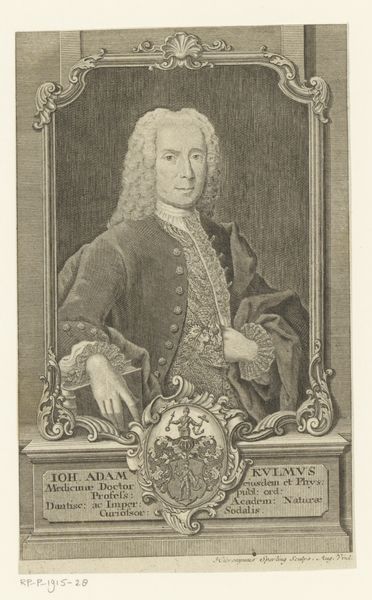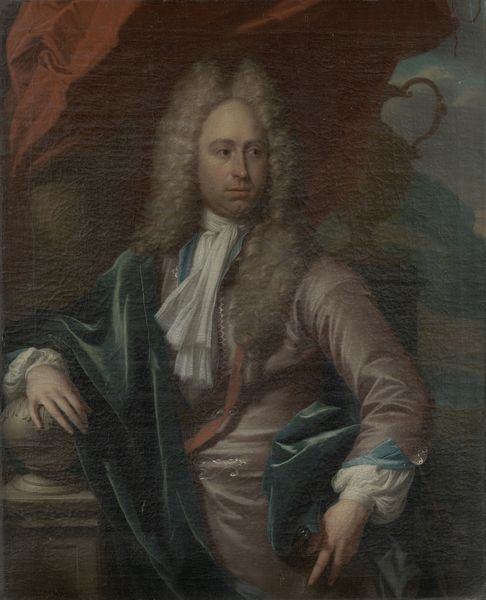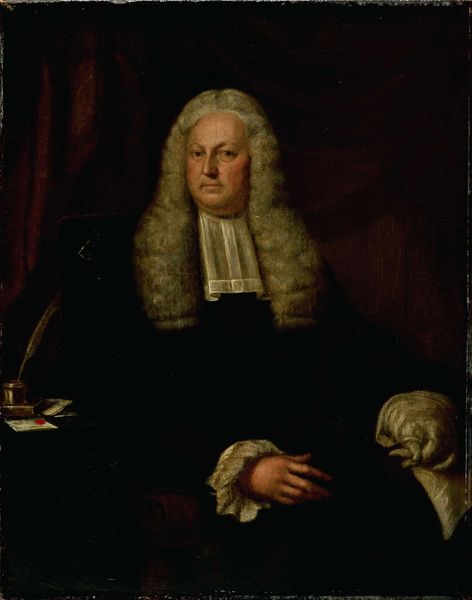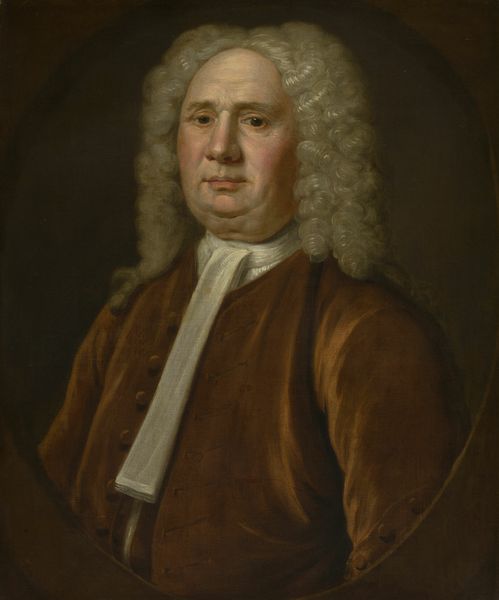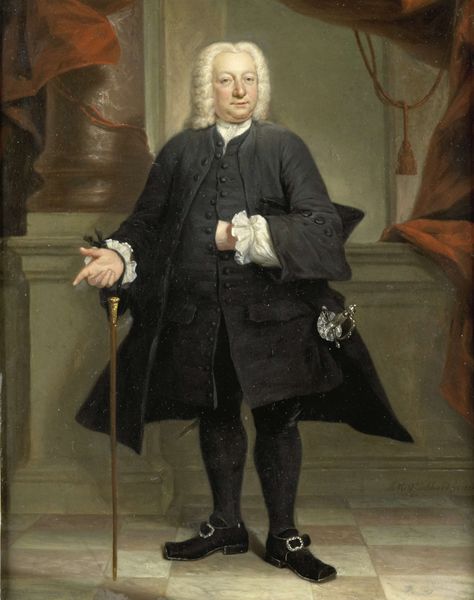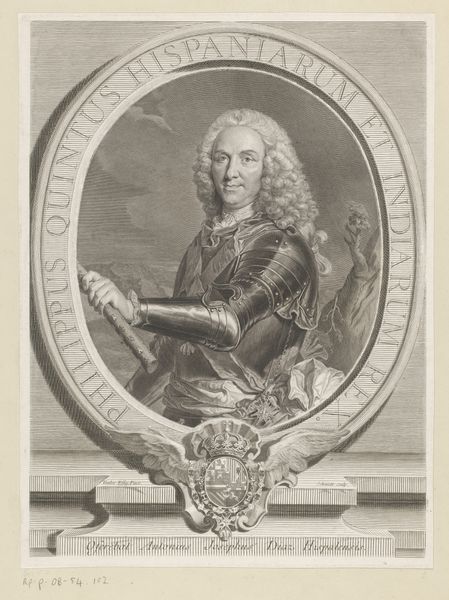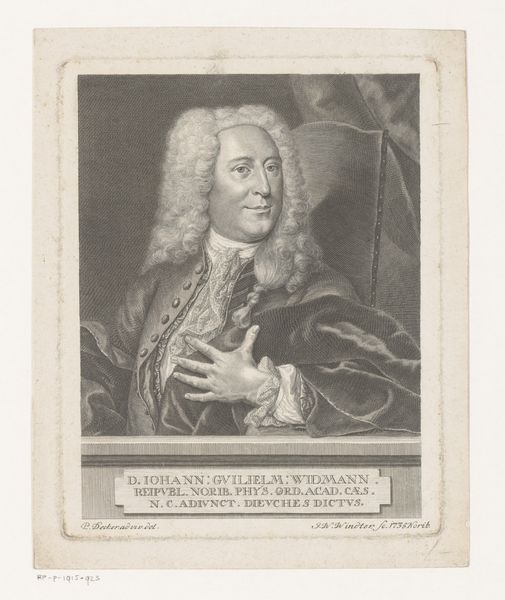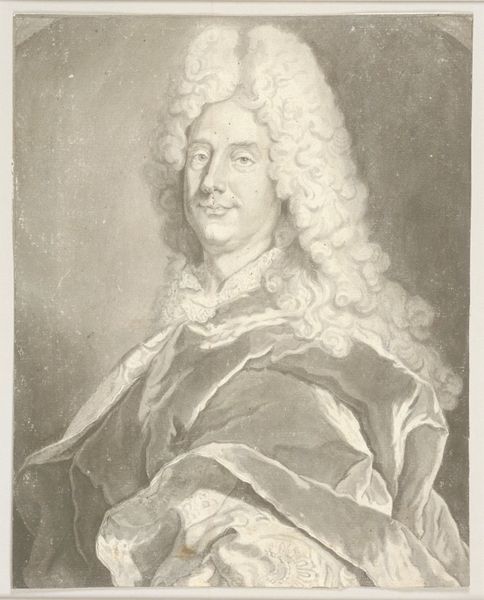
oil-paint
#
portrait
#
baroque
#
oil-paint
#
oil painting
#
history-painting
#
portrait art
#
realism
Dimensions: height 102 cm, width 84.5 cm
Copyright: Rijks Museum: Open Domain
Theodorus Justinus Rheen painted this portrait of Abraham Patras between 1735 and 1737 using oil on canvas. Look closely and you'll notice how the material influences the appearance of the artwork. The smooth, even surface of the canvas allows for a high level of detail. The application of oil paint in thin, translucent layers, or glazes, creates depth and luminosity. The way Rheen built up layers upon layers of paint is fascinating. These processes allowed the artist to capture the texture of Patras's luxurious clothing and powdered wig, emphasizing his social status. The artist was clearly skilled in painting convincing likenesses. But he was equally adept at capturing the weight and drape of the fabric behind the figure, and the gleam of the metal telescope. Consider the amount of labor involved in producing not only the painting, but all the trappings of status that Patras displays. This portrait serves as a reminder of the social and economic structures that underpinned artistic production in the 18th century.
Comments
rijksmuseum about 2 years ago
⋮
The highest-ranking Dutch East India Company (VOC) official in Asia was the governor-general. He presided in the Castle of Batavia (now Jakarta, Indonesia), a fort built by the Dutch. The assembly hall in the Castle of Batavia was the centre of Dutch power in Asia. The walls were hung with portraits of all of the governors-general. Most of the 18th-century examples shown here were painted in Asia, often by anony¬mous artists.
Join the conversation
Join millions of artists and users on Artera today and experience the ultimate creative platform.
